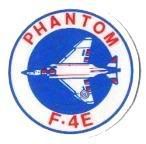
 Aktif Konular
Aktif Konular  Üye Listesi
Üye Listesi  Takvim
Takvim  Arama
Arama  |
 Aktif Konular Aktif Konular  Üye Listesi Üye Listesi  Takvim Takvim  Arama Arama |
| |
| Tayyareler | |
| |
  |
| Sayfa 2 Sonraki >> |
| Yazar | Mesaj |
|
Nick_Karatzides
Üye 

Kayıt Tarihi: 06/06/2009 Aktif Durum: Aktif Değil Gönderilenler: 250 |
  Konu: 1/18 scale F-16CJ Fighting Falcon Block 52 HAF Konu: 1/18 scale F-16CJ Fighting Falcon Block 52 HAFGönderim Zamanı: 06/06/2009 Saat 19:08 |
|
BBI - Elite Force conversion & scratchbuild The following article is to describe step by step the 1/18 scale Lockheed Martin F-16CJ Fighting Falcon Block 52, currently flying with Hellenic Air Force, conversion using the BBI - Elite Force toy model kit, bought from the States a couple of years before for less than $60. 
 Despite my enthusiasm when I finally got this 1/18 model in my hands, as soon as I opened the box which exceeds in length the 3 feet (!!!), I realized that I would face hard time and massive scratch building and I'd need to spend hundreds hours on my hobby bench to make it look descent. In the substance, it is not even a model to assembly but a game for children which could be ready in less than 2 minutes. The detail convinces only if you look the model from a distance while points such as landing gear system, engine nozzle, panel lines etc are real dramatic. Luckily, the model is accurate on dimensions and could possibly be used as a F-16 exhibit model that do not interest on conformity of colors, special details etc. 
 So, I decide to begin the building from the zero and give life in this 82cm long monster with no detail (comparing to scale models by Hasegawa, Tamiya etc) but however this 1/18 F-16 toy has almost unlimited possibilities of becoming a high detailed scale model. It should be noticed that the model's airframe comes straight from the box already sealed and I had to open it and work it from inside. That's a hard work to do, because the fuselage remains stuck with internal reinforcing possessors and metal supports & screws that I should locate and carefully remove without causing any damage on plastic material. 

82cm long beast, immediately after opening of packing box. I am already start thinking about finding the proper window to place this Falcon By selecting heavy metal on my CD player (in order to I become aggressive and get the "Friday 13th" feeling) and using a saw and a Dremel tool, I opened the fuselage, the basic airframe pieces were cut and useless parts such as landing gear, engine nozzle, a part of the air intake etc were removed and led to the garbage. Düzenleyen Nick_Karatzides - 04/04/2010 Saat 13:21 |
|
 |
|
|
Nick_Karatzides
Üye 

Kayıt Tarihi: 06/06/2009 Aktif Durum: Aktif Değil Gönderilenler: 250 |
  Gönderim Zamanı: 06/06/2009 Saat 19:10 Gönderim Zamanı: 06/06/2009 Saat 19:10 |
|
Beginning the construction from behind, I should first scratch build the Pratt & Whitney F100 turbofan engine (F-16CJ Block 52) nozzle, the afterburner compartment etc as detailed as a curious and indiscreet eye could see. Considering the huge dimensions of the model, I should theoretically scratch build almost everything! Using plastic cards, my new X-Acto blade, F-16 related bibliography, photographs and the T.O service manual used for the real F-16, I started. 













 Düzenleyen Nick_Karatzides - 04/04/2010 Saat 13:40 |
|
 |
|
|
Nick_Karatzides
Üye 

Kayıt Tarihi: 06/06/2009 Aktif Durum: Aktif Değil Gönderilenler: 250 |
  Gönderim Zamanı: 06/06/2009 Saat 19:11 Gönderim Zamanı: 06/06/2009 Saat 19:11 |
|
Building the engine's air intake & blade fans was quite easy. Using an old 1st aid kit tape cap which just fit on 1/18 diameter engine 1st stage blade fans, I placed carefully plastic blades as shown in the following pictures. Molding some epoxy putty, I build a basic item of a cone, then stuck some steel pins on it and removed them after 20 minutes, as soon as the epoxy putty was solid rock. Spinning the epoxy item with the Dremel tool and sanding as required, I formed in to a cone shape and finally I placed a pitot tube sensor on the top of the cone spinner as shown in the real Pratt & Whitney F100 turbofan engine pictures.
















 Düzenleyen Nick_Karatzides - 04/04/2010 Saat 13:41 |
|
 |
|
|
Nick_Karatzides
Üye 

Kayıt Tarihi: 06/06/2009 Aktif Durum: Aktif Değil Gönderilenler: 250 |
  Gönderim Zamanı: 06/06/2009 Saat 19:18 Gönderim Zamanı: 06/06/2009 Saat 19:18 |
|
Because the main BBI - Elite Force kit was very poor on detail and had the air intake tube sealed, I had to first open the air intake by cutting the plastic and then build from scratch the approximately 30cm long tube, leading to the engine's 1st stage blades described in detail into previous Chapter I. Just because the F-16's air intake tube is not just a straight line tube, the idea of scale building with plastic card was rejected from the first moment. If you notice, the F-16's air intake tube is curved in both X and Y axes while heading to the engine's 1st stage blades. 

Source: http://www.f-16.net For this reason, I decide that a "negative image" cast of the air intake tube should be made and build the tube model using this cast, with two available & different methods:
Having the official F-16 Block 52 blueprints copied from the T.O manual, I got the exact dimensions of the air intake tube, print them down on a cutaway image and using scissor and simple cardboard, I create a the "negative image" of the air intake tube, basic spine. As soon as the spine made by cardboard was set on a straight line, it was wrapped around with a cloth net found into the 1st aid kit. Small quantities of plaster, highly thinned with water, applied on the cloth net with a brush, to build the first layer of a hollow plaster cast, which would become the "negative image" of the air intake tube. 



 Düzenleyen Nick_Karatzides - 04/04/2010 Saat 13:44 |
|
 |
|
|
Nick_Karatzides
Üye 

Kayıt Tarihi: 06/06/2009 Aktif Durum: Aktif Değil Gönderilenler: 250 |
  Gönderim Zamanı: 06/06/2009 Saat 19:19 Gönderim Zamanı: 06/06/2009 Saat 19:19 |
|
Materials like plaster, start as a dry powder that is mixed with water to form a paste which liberates heat and then hardens. Unlike mortar and cement, plaster remains quite soft after drying, and can be easily manipulated with metal tools or even sandpaper. These characteristics make plaster suitable for a finishing, rather than a load-bearing material and that exactly is what I'm looking for on this air intake tube construction. Keep in mind that adding salt into wet plaster mixture, reduce the plaster's hardening time and adding vinegar into wet plaster mixture, extend the plaster's hardening time. When the first layer of thinned plaster applied on the net was dry and hard enough to hold the basic spine made by cardboard, a second thin layer of plaster was applied to form the curves of the air intake tube, following the lines of the pre-cutting cardboard. The basic idea, is to keep this plaster cast hollow, accurate on scale and as thin as possible trying not to apply extra stuff where is no needed. When the plaster cast was dry and hardened, tiny quantities of modeling putty added to close minor scratches and pores on plaster cast surface, brushed with water based clue, painted in black color, dry sanded and finally sprayed overall with gloss shiny coat.




 Düzenleyen Nick_Karatzides - 04/04/2010 Saat 13:45 |
|
 |
|
|
Nick_Karatzides
Üye 

Kayıt Tarihi: 06/06/2009 Aktif Durum: Aktif Değil Gönderilenler: 250 |
  Gönderim Zamanı: 06/06/2009 Saat 19:20 Gönderim Zamanı: 06/06/2009 Saat 19:20 |
|
Johnson's baby oil (thin layers of vaseline based mixtures can be used also) brushed as a segregative material for later purpose and generous quantities of polyester filler applied on the plaster cast. The specific polyester filler I used, is enriched with fiberglass grains to enforce the final construction. The filler should be always used with the proper catalyst which provides a solid rock build and approximately 5 to 10 minutes time window to form it into shape.

 When the plaster cast used as a "negative image" of the air intake tube, was fully covered with a 3-4 mm thick layer of polyester filler enriched with fiberglass grains and had enough time to polymerize and get solid rock, it was sunk into water and stayed wet overnight, in order to let the enclosed cast made by cardboard and plaster get moistened and decomposed. 
 Düzenleyen Nick_Karatzides - 04/04/2010 Saat 13:47 |
|
 |
|
|
Nick_Karatzides
Üye 

Kayıt Tarihi: 06/06/2009 Aktif Durum: Aktif Değil Gönderilenler: 250 |
  Gönderim Zamanı: 06/06/2009 Saat 19:21 Gönderim Zamanı: 06/06/2009 Saat 19:21 |
 |
|
|
Nick_Karatzides
Üye 

Kayıt Tarihi: 06/06/2009 Aktif Durum: Aktif Değil Gönderilenler: 250 |
  Gönderim Zamanı: 06/06/2009 Saat 19:23 Gönderim Zamanı: 06/06/2009 Saat 19:23 |
|
By the time all the thinned plaster, dissolved cardboard pieces and cloth net remains were removed, the tube was sanded properly, washed and attached by using cyanoacrylic glue on the F-16 lower fuselage "mouth" housing. Epoxy putty and polyester filler used to close the huge gaps.




 After proper sanding, the air intake tube looks OK 


 Düzenleyen Nick_Karatzides - 04/04/2010 Saat 13:49 |
|
 |
|
|
Clumsy
Üye 

Pervane Sever Kayıt Tarihi: 23/08/2005 Aktif Durum: Aktif Değil Gönderilenler: 1408 |
  Gönderim Zamanı: 07/06/2009 Saat 10:22 Gönderim Zamanı: 07/06/2009 Saat 10:22 |
|
Well,
Welcome to the site. Personally i would like to thank you sharing your ways of making a model. Hope to see more from you. Take care, Arkut |
|
|
-Sorumluuu...
-Yok, yoook kesinlikle sorumlu de?il canym. Olsa olsa ancak sorunlu olur! -Peki o zaman. Sorunluuu... |
|
 |
|
|
Burak
Üye 

Kayıt Tarihi: 22/10/2005 Konum: Ankara Aktif Durum: Aktif Değil Gönderilenler: 1559 |
  Gönderim Zamanı: 07/06/2009 Saat 12:23 Gönderim Zamanı: 07/06/2009 Saat 12:23 |
|
First,wellcome.It's good to see a foreigner modeler posting to our boards.
The rebuilding of the tube is pretty pretty impressive,at least I've never seen a modeler using this technique before.Good job,very well done. Thanks for sharing with us,more please. |
|
 |
|
|
Nick_Karatzides
Üye 

Kayıt Tarihi: 06/06/2009 Aktif Durum: Aktif Değil Gönderilenler: 250 |
  Gönderim Zamanı: 07/06/2009 Saat 23:28 Gönderim Zamanı: 07/06/2009 Saat 23:28 |
|
Using styrene plastic card, I formed an 1-inch wide ring and placed it to the air intake tube's end, in order to fit perfectly the Pratt & Whitney F100 turbofan engine's 1st stage blade fans structure, which displayed earlier. Epoxy putty filled the gaps and formed the tube's end diameter to a perfect circle.


 Düzenleyen Nick_Karatzides - 04/04/2010 Saat 13:50 |
|
 |
|
|
Nick_Karatzides
Üye 

Kayıt Tarihi: 06/06/2009 Aktif Durum: Aktif Değil Gönderilenler: 250 |
  Gönderim Zamanı: 07/06/2009 Saat 23:29 Gönderim Zamanı: 07/06/2009 Saat 23:29 |
|
As it is well known, the Block 52 F-16s (using the Pratt & Whitney F100-PW 229 afterburning turbofan engine) air intake shapes are not the same with older "big mouth" F-16 versions such as Block 30 and Block 50 (using the General Electric F110-GE 100 afterburning turbofan engine) also used by the Hellenic Air Force Squadrons. The newest Block 52s have a larger nose tire which required the intake to be reshaped to accomodate the new tires size. For this reason, the Block 52 F-16's newer air intake have a noticeable bump about 4 feet in on the lower surface.






 Düzenleyen Nick_Karatzides - 04/04/2010 Saat 13:50 |
|
 |
|
|
Nick_Karatzides
Üye 

Kayıt Tarihi: 06/06/2009 Aktif Durum: Aktif Değil Gönderilenler: 250 |
  Gönderim Zamanı: 08/06/2009 Saat 06:13 Gönderim Zamanı: 08/06/2009 Saat 06:13 |
|
Starting to work behind the engine's last stage blades and the afterburner's spoked frame, I had to simulate in scale the inner embossed detail on the afterburner's area. Following the exact blueprint plans of the T.O service manual used for the real F-16 and after converting numbers to 1/18 scale, I did calculate the AB area dimensions, cut a piece of plastic card, fold it to cylinder and reinforce it externally with plastic bands, to ensure that it'll keep in shape. This cylinder is the base to host the inner embossed detail on the afterburner's area. As soon as the base cylinder was ready, I opened randomly more than 30 holes, using a 2mm drill - the reason will be explained into following lines. 

 Having a couple of different methods in mind to simulate in scale the inner embossed detail on the afterburner's area, but knowing that the following method is much accurate to scale and easier to re-do if something goes wrong, I tried a visit into my local PC store and searched for a cable tape used into PCs to connect the motherboard with the HDs or CD/DVDs etc and transfer data between them. I found a plenty of PC cable tapes, but I finally got one with intense embossed detail between the cable lines. After calculating the base cylinder's inner circumference, I cut the brand new cable tape on exact length, sprayed it with light gray base coat and placed it carefully into the cylinder, trying to avoid folding marks on the cable tape surface. 


 After placing the cable tape into the base cylinder without spreading clue, I pressed it against the plastic using my thumb, to eliminate any possible bumps or waves that may appeared. Thank to accurate calculations the cable tape ends, came exactly one against the other, almost in a perfect facing touch. To secure the cable tape in this place, I dropped cyanoacrylic clue through the opened holes on plastic. 














 Düzenleyen Nick_Karatzides - 04/04/2010 Saat 13:39 |
|
 |
|
|
tozbek
Üye 

Kayıt Tarihi: 23/08/2005 Konum: Istanbul Aktif Durum: Aktif Değil Gönderilenler: 1151 |
  Gönderim Zamanı: 08/06/2009 Saat 14:49 Gönderim Zamanı: 08/06/2009 Saat 14:49 |
|
Wooowww... Interesting. Wish to see more...
Tolga |
|
 |
|
|
nezih
Üye 

Kayıt Tarihi: 02/09/2005 Aktif Durum: Aktif Değil Gönderilenler: 1077 |
  Gönderim Zamanı: 08/06/2009 Saat 15:31 Gönderim Zamanı: 08/06/2009 Saat 15:31 |
|
Welcome... Great job, waiting for next steps...
Best regards. |
|
 |
|
|
mozkar
Üye 

Kayıt Tarihi: 17/01/2006 Aktif Durum: Aktif Değil Gönderilenler: 174 |
  Gönderim Zamanı: 11/06/2009 Saat 16:36 Gönderim Zamanı: 11/06/2009 Saat 16:36 |
|
Wellcome Nick..!
Interesting project, impressive work..! Looking forward to see it finished... |
|
|
mete
|
|
 |
|
|
sozgen70
Üye 
Kayıt Tarihi: 22/11/2005 Aktif Durum: Aktif Değil Gönderilenler: 133 |
  Gönderim Zamanı: 12/06/2009 Saat 09:02 Gönderim Zamanı: 12/06/2009 Saat 09:02 |
|
This is what I call scratchbuilding! Looking forward to see the final result.
|
|
 |
|
|
Nick_Karatzides
Üye 

Kayıt Tarihi: 06/06/2009 Aktif Durum: Aktif Değil Gönderilenler: 250 |
  Gönderim Zamanı: 13/06/2009 Saat 22:16 Gönderim Zamanı: 13/06/2009 Saat 22:16 |
|
As I personally believe that following simple techniques and sometimes unconventional methods, result in superior effects, I usually do not use enamel or acrylic paint to wash, because I feel risky when applying the paint mixture and let it run. I prefer an easier technique that can be undone if the results are poor - that makes it the perfect technique. I use hard chalk pastels to wash (NOT oil pastels). The hard chalk pastels, look like a teacher would use on the blackboard in school. Do not use the soft oil pastels that artist use to draw on paper. The hard chalk pastels are easy to find in a variety of colors into your local art store or maybe Wal-Mart if in US or ASDA if in UK.
To do the wash, I use an X-acto knife, a small metal or plastic container, an old brush, dish washing soap and a bit of water. Begin by scraping some chalk powder from the side of the chalk pastel stick, carefully put this chalk powder into the small container and add a tiny amount of water and stir. It is important to add a tiny amount of water in order to make the mixture look like mud - not like soup! For this reason, I use a syringe to add just few drops on the hard chalk pastel powder and I stir using the old brush. Because the chalk powder doesn't mix well with the water, a drop of dish washing soap is needed to break the surface tension of the water and also acts as a "glue" to help the chalk powder stick to the model. 





 Düzenleyen Nick_Karatzides - 04/04/2010 Saat 13:37 |
|
 |
|
| Sayfa 2 Sonraki >> |
  |
||
Forum Atla |
Kapalı Foruma Yeni Konu Gönderme Kapalı Forumdaki Konulara Cevap Yazma Kapalı Forumda Cevapları Silme Kapalı Forumdaki Cevapları Düzenleme Kapalı Forumda Anket Açma Kapalı Forumda Anketlerde Oy Kullanma |
|